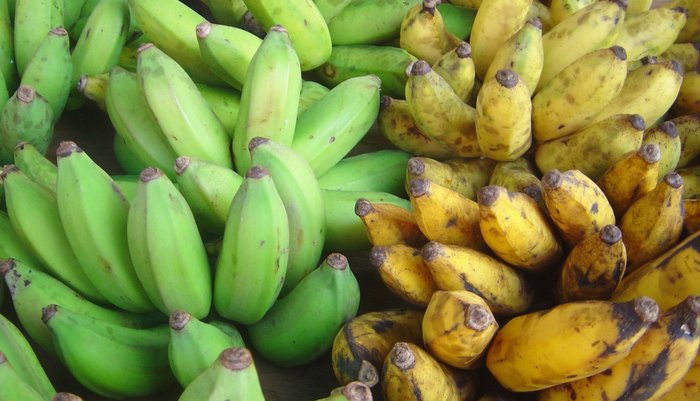Gardening: Yes, we have bananas

PHUKET: I was talking recently with an English lady visiting Phuket about gardening, and the subject of bananas came up.
“Do you know”, she enthused, “that banana skins put around the roots of rose bushes promote better growth?”
“No,” I replied in surprise.
But then I wouldn’t have known that, since bananas were like gold dust in my childhood, and my father’s 150 or so hybrid tea roses had to make do with dollops of cow dung carted in by wheelbarrow from the field next door.
In fact, the first banana I remember eating was when I was 10 years old.
The lady’s tip is a good idea for Phuket’s rose lovers though – if you are brave enough to try cultivating what is essentially a cool-climate shrub in a tropical climate. After all, banana skins are common enough here.
Wild bananas (kluay in Thai) grow everywhere in Phuket, taking over hillsides, secondary forest and even waste ground. And widely available hybrids make an excellent choice for the gardener with a new property and a bare plot, since they will not only thrive in full sunshine and relatively shallow soil, but will shoot up fast enough to provide shade for less robust plants. Commercial growers apply a nitrogen-rich N3: P1: K6 fertilizer.
Appearances, however, can be deceptive. Most wild varieties are full of seeds or are suitable mainly for cooking. Seedless or parthenocarpic commercial bananas owe their existence to hybridization. Even so, flavors can vary enormously – from mild, almost tasteless varieties to sweet and even slightly acidic ones. Some have dense flesh, while others are soft and floury.
In fact there are more than 200 kinds, grown in no fewer than 107 countries – the world’s most popular fruit.
All, however, ultimately trace their origins back to two wild species, Musa acuminata and Musa balbisiana.
Popular among Thais, short and stubby balbisianas owe their popularity to a sharp, astringent taste when young – a characteristic which makes them a useful accompaniment to phad thai, certain kinds of nam prik and nam nuang.
Both the flower – which has an artichoke-like flavor – and the stem are also used in Thai cuisine, and the leaves perform a range of functions from packaging for sticky rice and other snacks, to roofing material.
Most tropical countries differentiate between green plantains which are more starchy and generally used for cooking and dessert bananas, which are sweeter and eaten raw.
Thailand, which probably has more kinds than any other country, does not make this distinction.
In fact the world’s leading commercial banana, the Cavendish, exported by such leading producers as Fyffes, is not generally available in the Kingdom.
Bananas are unusual plants. They look like trees with their straight trunks and palm-like leaves, but in fact they are herbaceous flowering perennials. What appears to be a woody trunk is in fact a stem of toughly packed sheaths. Cut a section through the soft, water-laden tissue and it will resemble the layers of an onion.
Once mature, the banana plant will produce a huge, sexy-looking purplish flower spike, which will in turn bear fruit – up to 100 or more.
Slowly the parent plant will then expire, but suckers or offshoots from the underground roots will develop into new plants. Provided that there is enough depth of soil (a minimum of 60cm), the banana will continue to generate new growth.
Many health benefits accrue from eating bananas. They are currently fashionable among sportsmen as an instant energy provider, since they contain three natural and readily assimilated sugars – sucrose, fructose and glucose. Rich in vitamin B6, they also contain manganese, potassium and vitamin C.
People who suffer from cramps swear by them, and they are known to benefit the heart, nervous system and kidneys.
Above all they are affordable, convenient, ubiquitous and relatively low in calories.
One of the most popular songs ever written – Yes, We Have No Bananas, written in 1922, is now way out of date. Yes, we DO have bananas!
The ones favored here as a dessert fruit eaten raw, are finger bananas, which are usually bought when green and allowed to turn yellow.
Quite small, they possess a sweet, perfumed flavor and are delicious. They are best eaten when the yellow skin is beginning to develop brown spots.
At the other end of the scale are “king” or “rajah” bananas which may be as much as 18 inches long.
Catch Patrick online at PhuketGazette.net Sunday morning next week, when he devles into the differences of citruses.
— Patrick Campbell
Latest Thailand News
Follow The Thaiger on Google News:


























